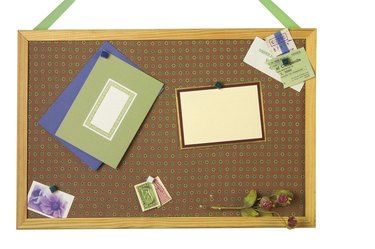Things You'll Need
Epoxy resin or water-soluble glue
Two containers of equal volume
Mixing sticks
Empty spray bottle
Mold
Mold release
Granulated cork

Cork is the outer bark of an evergreen oak that grows in Southern Europe. According to the website Architonic, cork is watertight and resists rotting, making it an excellent green product for use in flooring, children's furniture, patios and dishes. Because cork is impermeable, its low density makes it ideal for floatation devices such as life jackets. You can purchase molds made from silicone in two parts or as a solid piece.
Step 1
Prepare your mold by wiping away dust or other debris. If making your own mold with silicone, prepare the silicone according to directions. Spray mold release on the molds before pouring the cork.
Video of the Day
Step 2
Prepare epoxy resin to mix with the granulated cork. If using epoxy, you will have to work quickly to keep the resin from setting up before the cork is cast. With a water-soluble glue, pour some of it into a spray bottle to spray the mold before the cork is cast. Mix the remainder of the glue with the granulated cork and coat well.
Step 3
Pour or cast the cork into the molds. The resin will begin to turn white as the mold hardens. Spray water-soluble glue, if using this method, across the top layer after you have cast the cork.
Step 4
Remove the cast cork from the mold or molds after it has set up or dried completely. Allow the cast cork to finish setting overnight. Remove any residual cork from the molds before storing.
Tip
For large objects, epoxy resins are not recommended. They set up too quickly to mix well with large amounts of granulated cork.
Warning
Work in a ventilated area with the epoxy resins. Do not clean with soap and water. Use old rags to clean with, then throw away.
Video of the Day